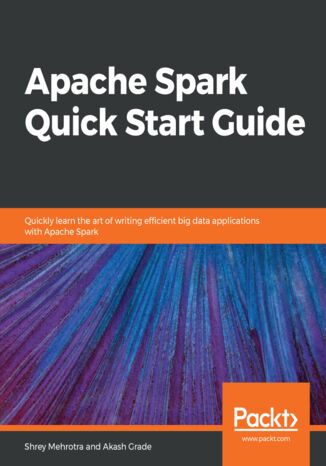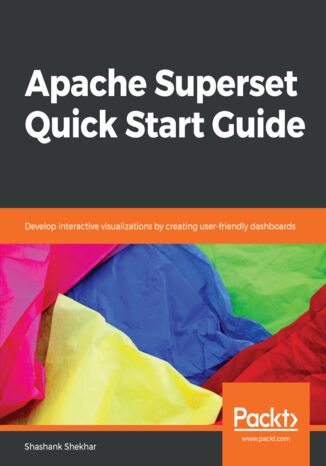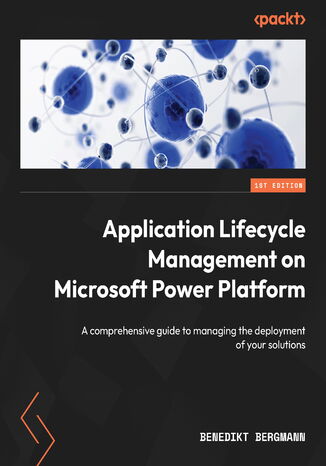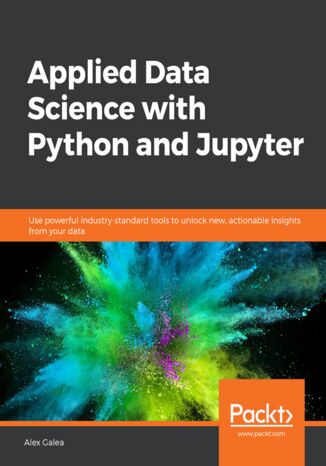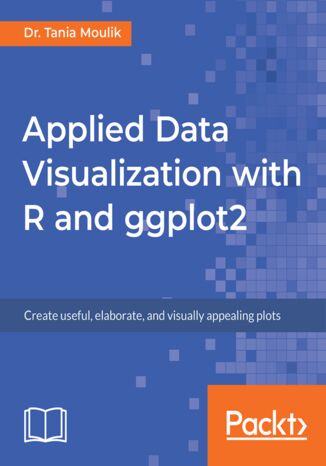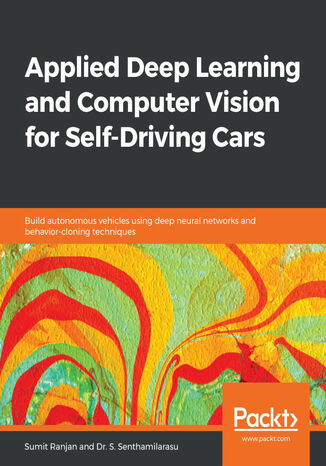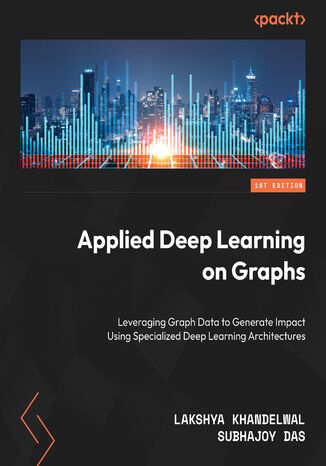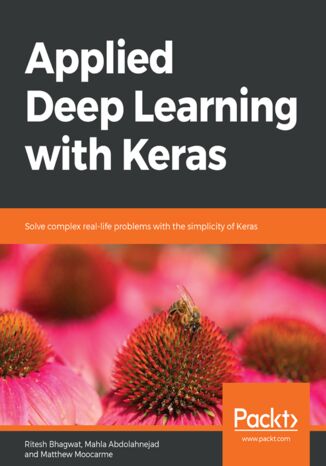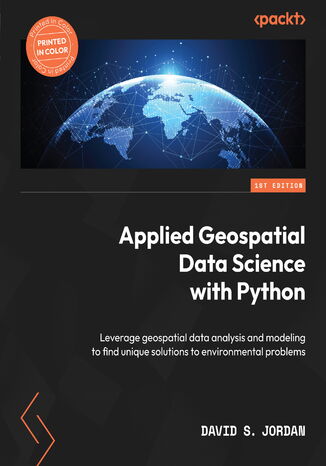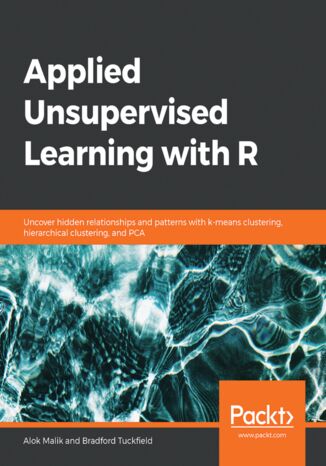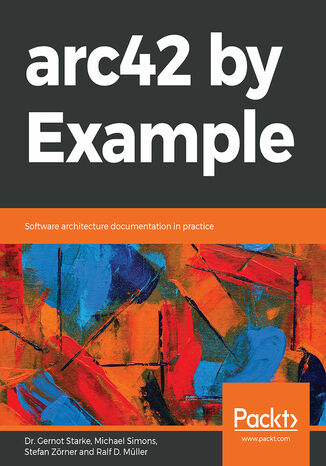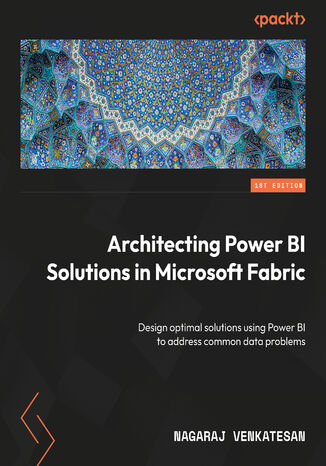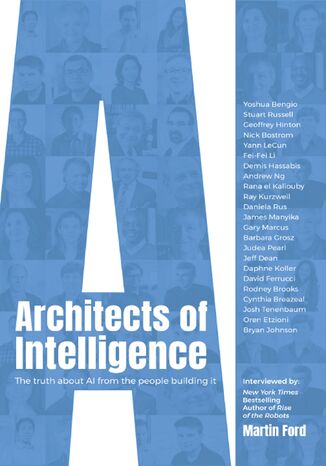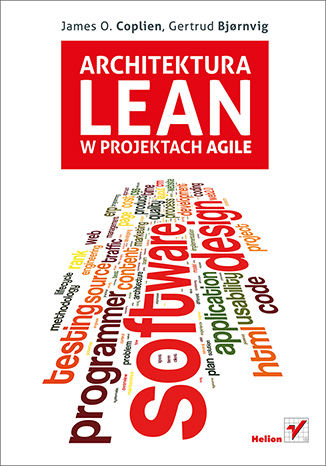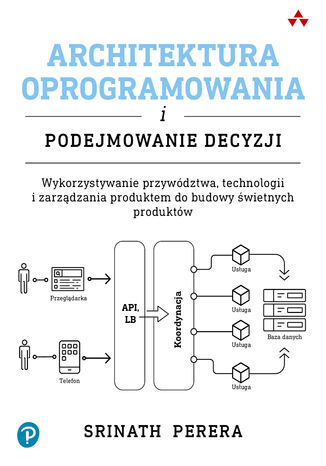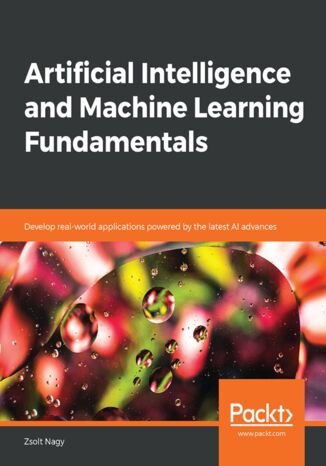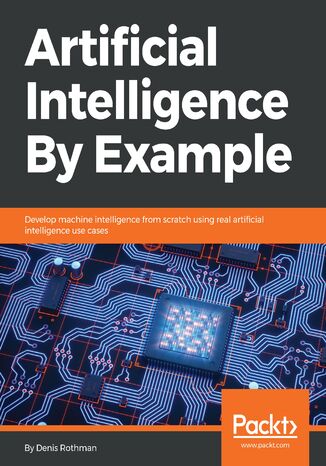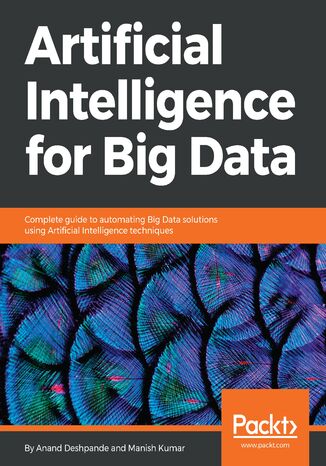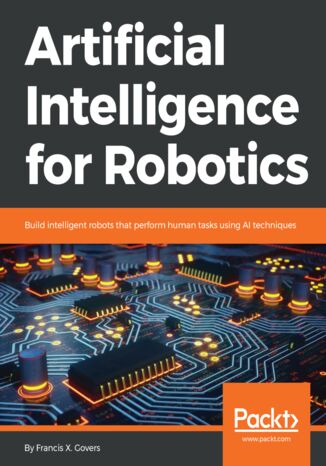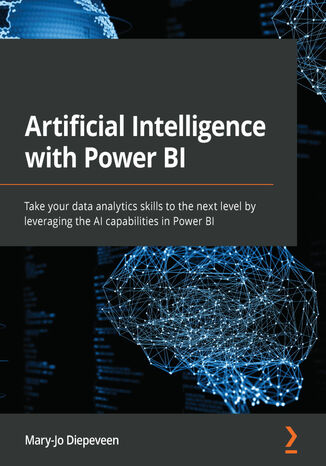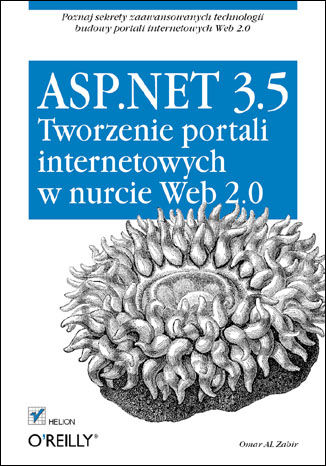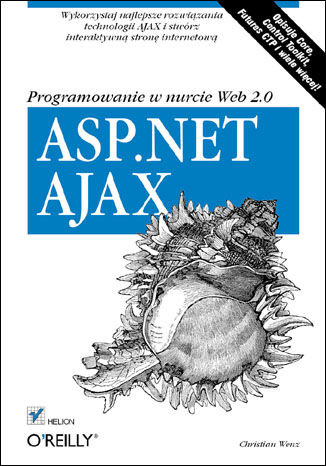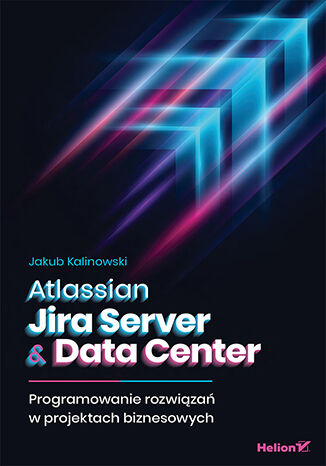Kategorie
Ebooki
-
Biznes i ekonomia
- Bitcoin
- Bizneswoman
- Coaching
- Controlling
- E-biznes
- Ekonomia
- Finanse
- Giełda i inwestycje
- Kompetencje osobiste
- Komputer w biurze
- Komunikacja i negocjacje
- Mała firma
- Marketing
- Motywacja
- Multimedialne szkolenia
- Nieruchomości
- Perswazja i NLP
- Podatki
- Polityka społeczna
- Poradniki
- Prezentacje
- Przywództwo
- Public Relation
- Raporty, analizy
- Sekret
- Social Media
- Sprzedaż
- Start-up
- Twoja kariera
- Zarządzanie
- Zarządzanie projektami
- Zasoby ludzkie (HR)
-
Dla dzieci
-
Dla młodzieży
-
Edukacja
-
Encyklopedie, słowniki
-
E-prasa
- Architektura i wnętrza
- BHP
- Biznes i Ekonomia
- Dom i ogród
- E-Biznes
- Ekonomia i finanse
- Ezoteryka
- Finanse
- Finanse osobiste
- Firma
- Fotografia
- Informatyka
- Kadry i płace
- Kobieca
- Komputery, Excel
- Księgowość
- Kultura i literatura
- Naukowe i akademickie
- Ochrona środowiska
- Opiniotwórcze
- Oświata
- Podatki
- Podróże
- Psychologia
- Religia
- Rolnictwo
- Rynek książki i prasy
- Transport i Spedycja
- Zdrowie i uroda
-
Historia
-
Informatyka
- Aplikacje biurowe
- Bazy danych
- Bioinformatyka
- Biznes IT
- CAD/CAM
- Digital Lifestyle
- DTP
- Elektronika
- Fotografia cyfrowa
- Grafika komputerowa
- Gry
- Hacking
- Hardware
- IT w ekonomii
- Pakiety naukowe
- Podręczniki szkolne
- Podstawy komputera
- Programowanie
- Programowanie mobilne
- Serwery internetowe
- Sieci komputerowe
- Start-up
- Systemy operacyjne
- Sztuczna inteligencja
- Technologia dla dzieci
- Webmasterstwo
-
Inne
-
Języki obce
-
Kultura i sztuka
-
Lektury szkolne
-
Literatura
- Antologie
- Ballada
- Biografie i autobiografie
- Dla dorosłych
- Dramat
- Dzienniki, pamiętniki, listy
- Epos, epopeja
- Esej
- Fantastyka i science-fiction
- Felietony
- Fikcja
- Humor, satyra
- Inne
- Klasyczna
- Kryminał
- Literatura faktu
- Literatura piękna
- Mity i legendy
- Nobliści
- Nowele
- Obyczajowa
- Okultyzm i magia
- Opowiadania
- Pamiętniki
- Podróże
- Poemat
- Poezja
- Polityka
- Popularnonaukowa
- Powieść
- Powieść historyczna
- Proza
- Przygodowa
- Publicystyka
- Reportaż
- Romans i literatura obyczajowa
- Sensacja
- Thriller, Horror
- Wywiady i wspomnienia
-
Nauki przyrodnicze
-
Nauki społeczne
-
Podręczniki szkolne
-
Popularnonaukowe i akademickie
- Archeologia
- Bibliotekoznawstwo
- Filmoznawstwo
- Filologia
- Filologia polska
- Filozofia
- Finanse i bankowość
- Geografia
- Gospodarka
- Handel. Gospodarka światowa
- Historia i archeologia
- Historia sztuki i architektury
- Kulturoznawstwo
- Lingwistyka
- Literaturoznawstwo
- Logistyka
- Matematyka
- Medycyna
- Nauki humanistyczne
- Pedagogika
- Pomoce naukowe
- Popularnonaukowa
- Pozostałe
- Psychologia
- Socjologia
- Teatrologia
- Teologia
- Teorie i nauki ekonomiczne
- Transport i spedycja
- Wychowanie fizyczne
- Zarządzanie i marketing
-
Poradniki
-
Poradniki do gier
-
Poradniki zawodowe i specjalistyczne
-
Prawo
- BHP
- Historia
- Kodeks drogowy. Prawo jazdy
- Nauki prawne
- Ochrona zdrowia
- Ogólne, kompendium wiedzy
- Podręczniki akademickie
- Pozostałe
- Prawo budowlane i lokalowe
- Prawo cywilne
- Prawo finansowe
- Prawo gospodarcze
- Prawo gospodarcze i handlowe
- Prawo karne
- Prawo karne. Przestępstwa karne. Kryminologia
- Prawo międzynarodowe
- Prawo międzynarodowe i zagraniczne
- Prawo ochrony zdrowia
- Prawo oświatowe
- Prawo podatkowe
- Prawo pracy i ubezpieczeń społecznych
- Prawo publiczne, konstytucyjne i administracyjne
- Prawo rodzinne i opiekuńcze
- Prawo rolne
- Prawo socjalne, prawo pracy
- Prawo Unii Europejskiej
- Przemysł
- Rolne i ochrona środowiska
- Słowniki i encyklopedie
- Zamówienia publiczne
- Zarządzanie
-
Przewodniki i podróże
- Afryka
- Albumy
- Ameryka Południowa
- Ameryka Środkowa i Północna
- Australia, Nowa Zelandia, Oceania
- Austria
- Azja
- Bałkany
- Bliski Wschód
- Bułgaria
- Chiny
- Chorwacja
- Czechy
- Dania
- Egipt
- Estonia
- Europa
- Francja
- Góry
- Grecja
- Hiszpania
- Holandia
- Islandia
- Litwa
- Łotwa
- Mapy, Plany miast, Atlasy
- Miniprzewodniki
- Niemcy
- Norwegia
- Podróże aktywne
- Polska
- Portugalia
- Pozostałe
- Przewodniki po hotelach i restauracjach
- Rosja
- Rumunia
- Słowacja
- Słowenia
- Szwajcaria
- Szwecja
- Świat
- Turcja
- Ukraina
- Węgry
- Wielka Brytania
- Włochy
-
Psychologia
- Filozofie życiowe
- Kompetencje psychospołeczne
- Komunikacja międzyludzka
- Mindfulness
- Ogólne
- Perswazja i NLP
- Psychologia akademicka
- Psychologia duszy i umysłu
- Psychologia pracy
- Relacje i związki
- Rodzicielstwo i psychologia dziecka
- Rozwiązywanie problemów
- Rozwój intelektualny
- Sekret
- Seksualność
- Uwodzenie
- Wygląd i wizerunek
- Życiowe filozofie
-
Religia
-
Sport, fitness, diety
-
Technika i mechanika
Audiobooki
-
Biznes i ekonomia
- Bitcoin
- Bizneswoman
- Coaching
- Controlling
- E-biznes
- Ekonomia
- Finanse
- Giełda i inwestycje
- Kompetencje osobiste
- Komunikacja i negocjacje
- Mała firma
- Marketing
- Motywacja
- Nieruchomości
- Perswazja i NLP
- Podatki
- Polityka społeczna
- Poradniki
- Prezentacje
- Przywództwo
- Public Relation
- Sekret
- Social Media
- Sprzedaż
- Start-up
- Twoja kariera
- Zarządzanie
- Zarządzanie projektami
- Zasoby ludzkie (HR)
-
Dla dzieci
-
Dla młodzieży
-
Edukacja
-
Encyklopedie, słowniki
-
E-prasa
-
Historia
-
Informatyka
-
Inne
-
Języki obce
-
Kultura i sztuka
-
Lektury szkolne
-
Literatura
- Antologie
- Ballada
- Biografie i autobiografie
- Dla dorosłych
- Dramat
- Dzienniki, pamiętniki, listy
- Epos, epopeja
- Esej
- Fantastyka i science-fiction
- Felietony
- Fikcja
- Humor, satyra
- Inne
- Klasyczna
- Kryminał
- Literatura faktu
- Literatura piękna
- Mity i legendy
- Nobliści
- Nowele
- Obyczajowa
- Okultyzm i magia
- Opowiadania
- Pamiętniki
- Podróże
- Poezja
- Polityka
- Popularnonaukowa
- Powieść
- Powieść historyczna
- Proza
- Przygodowa
- Publicystyka
- Reportaż
- Romans i literatura obyczajowa
- Sensacja
- Thriller, Horror
- Wywiady i wspomnienia
-
Nauki przyrodnicze
-
Nauki społeczne
-
Popularnonaukowe i akademickie
-
Poradniki
-
Poradniki zawodowe i specjalistyczne
-
Prawo
-
Przewodniki i podróże
-
Psychologia
- Filozofie życiowe
- Komunikacja międzyludzka
- Mindfulness
- Ogólne
- Perswazja i NLP
- Psychologia akademicka
- Psychologia duszy i umysłu
- Psychologia pracy
- Relacje i związki
- Rodzicielstwo i psychologia dziecka
- Rozwiązywanie problemów
- Rozwój intelektualny
- Sekret
- Seksualność
- Uwodzenie
- Wygląd i wizerunek
- Życiowe filozofie
-
Religia
-
Sport, fitness, diety
-
Technika i mechanika
Kursy video
-
Bazy danych
-
Big Data
-
Biznes, ekonomia i marketing
-
Cyberbezpieczeństwo
-
Data Science
-
DevOps
-
Dla dzieci
-
Elektronika
-
Grafika/Wideo/CAX
-
Gry
-
Microsoft Office
-
Narzędzia programistyczne
-
Programowanie
-
Rozwój osobisty
-
Sieci komputerowe
-
Systemy operacyjne
-
Testowanie oprogramowania
-
Urządzenia mobilne
-
UX/UI
-
Web development
-
Zarządzanie
Podcasty
- Ebooki
- Informatyka
- Biznes IT
Biznes IT
Książki online z kategorii Biznes IT pomogą Ci opanować takie zagadnienia techniczne, jak analiza danych, blockchain, czy programowanie. Znajdziesz tutaj także świetne pozycje dotyczące reklamy internetowej i ogólnie tego, jak z powodzeniem prowadzić biznes online. Omawiają one choćby to, jak analizować dane marketingowe oraz budować dobrą relację z klientem.
Apache Spark is a ?exible framework that allows processing of batch and real-time data. Its unified engine has made it quite popular for big data use cases. This book will help you to get started with Apache Spark 2.0 and write big data applications for a variety of use cases.It will also introduce you to Apache Spark – one of the most popular Big Data processing frameworks. Although this book is intended to help you get started with Apache Spark, but it also focuses on explaining the core concepts. This practical guide provides a quick start to the Spark 2.0 architecture and its components. It teaches you how to set up Spark on your local machine. As we move ahead, you will be introduced to resilient distributed datasets (RDDs) and DataFrame APIs, and their corresponding transformations and actions. Then, we move on to the life cycle of a Spark application and learn about the techniques used to debug slow-running applications. You will also go through Spark’s built-in modules for SQL, streaming, machine learning, and graph analysis.Finally, the book will lay out the best practices and optimization techniques that are key for writing efficient Spark applications. By the end of this book, you will have a sound fundamental understanding of the Apache Spark framework and you will be able to write and optimize Spark applications.
Apache Superset is a modern, open source, enterprise-ready business intelligence (BI) web application. With the help of this book, you will see how Superset integrates with popular databases like Postgres, Google BigQuery, Snowflake, and MySQL. You will learn to create real time data visualizations and dashboards on modern web browsers for your organization using Superset.First, we look at the fundamentals of Superset, and then get it up and running. You'll go through the requisite installation, configuration, and deployment. Then, we will discuss different columnar data types, analytics, and the visualizations available. You'll also see the security tools available to the administrator to keep your data safe.You will learn how to visualize relationships as graphs instead of coordinates on plain orthogonal axes. This will help you when you upload your own entity relationship dataset and analyze the dataset in new, different ways. You will also see how to analyze geographical regions by working with location data.Finally, we cover a set of tutorials on dashboard designs frequently used by analysts, business intelligence professionals, and developers.
Benedikt Bergmann, Scott Durow
Managing Power Platform solutions manually can be challenging and time-consuming, as is application lifecycle management (ALM), which encompasses governance, development, and maintenance. This book provides comprehensive coverage of ALM, addressing planning, development, testing, deployment, and maintenance. Drawing on his extensive experience as a Power Platform consultant and Microsoft MVP, Benedikt Bergmann simplifies complex topics, making them accessible and easy to grasp.From planning and designing applications to deploying and maintaining them, this book provides step-by-step instructions, best practices, and real-world examples to effectively manage the entire application lifecycle. You’ll gain insights into optimizing Power Platform's toolbox, including Power Apps, Power Automate, Power Pages, and Power Virtual Agents, for seamless collaboration, agile development, and rapid application delivery. You’ll also implement best practices for version control, code management, and collaboration using the Microsoft Power Platform.By the end of this book, you’ll be equipped with the knowledge and skills to effectively manage the entire application lifecycle, accelerate development cycles, and deliver exceptional solutions with the Microsoft Power Platform.
Getting started with data science doesn't have to be an uphill battle. Applied Data Science with Python and Jupyter is a step-by-step guide ideal for beginners who know a little Python and are looking for a quick, fast-paced introduction to these concepts. In this book, you'll learn every aspect of the standard data workflow process, including collecting, cleaning, investigating, visualizing, and modeling data. You'll start with the basics of Jupyter, which will be the backbone of the book. After familiarizing ourselves with its standard features, you'll look at an example of it in practice with our first analysis. In the next lesson, you dive right into predictive analytics, where multiple classification algorithms are implemented. Finally, the book ends by looking at data collection techniques. You'll see how web data can be acquired with scraping techniques and via APIs, and then briefly explore interactive visualizations.
Applied Data Visualization with R and ggplot2 introduces you to the world of data visualization by taking you through the basic features of ggplot2. To start with, you’ll learn how to set up the R environment, followed by getting insights into the grammar of graphics and geometric objects before you explore the plotting techniques.You’ll discover what layers, scales, coordinates, and themes are, and study how you can use them to transform your data into aesthetical graphs. Once you’ve grasped the basics, you’ll move on to studying simple plots such as histograms and advanced plots such as superimposing and density plots. You’ll also get to grips with plotting trends, correlations, and statistical summaries.By the end of this book, you’ll have created data visualizations that will impress your clients.
Sumit Ranjan, Dr. S. Senthamilarasu
Thanks to a number of recent breakthroughs, self-driving car technology is now an emerging subject in the field of artificial intelligence and has shifted data scientists' focus to building autonomous cars that will transform the automotive industry. This book is a comprehensive guide to use deep learning and computer vision techniques to develop autonomous cars. Starting with the basics of self-driving cars (SDCs), this book will take you through the deep neural network techniques required to get up and running with building your autonomous vehicle. Once you are comfortable with the basics, you'll delve into advanced computer vision techniques and learn how to use deep learning methods to perform a variety of computer vision tasks such as finding lane lines, improving image classification, and so on. You will explore the basic structure and working of a semantic segmentation model and get to grips with detecting cars using semantic segmentation. The book also covers advanced applications such as behavior-cloning and vehicle detection using OpenCV, transfer learning, and deep learning methodologies to train SDCs to mimic human driving.By the end of this book, you'll have learned how to implement a variety of neural networks to develop your own autonomous vehicle using modern Python libraries.
Lakshya Khandelwal, Subhajoy Das
With their combined expertise spanning cutting-edge AI product development at industry giants such as Walmart, Adobe, Samsung, and Arista Networks, Lakshya and Subhajoy provide real-world insights into the transformative world of graph neural networks (GNNs).This book demystifies GNNs, guiding you from foundational concepts to advanced techniques and real-world applications. You’ll see how graph data structures power today’s interconnected world, why specialized deep learning approaches are essential, and how to address challenges with existing methods. You’ll start by dissecting early graph representation techniques such as DeepWalk and node2vec. From there, the book takes you through popular GNN architectures, covering graph convolutional and attention networks, autoencoder models, LLMs, and technologies such as retrieval augmented generation on graph data. With a strong theoretical grounding, you’ll seamlessly navigate practical implementations, mastering the critical topics of scalability, interpretability, and application domains such as NLP, recommendations, and computer vision.By the end of this book, you’ll have mastered the underlying ideas and practical coding skills needed to innovate beyond current methods and gained strategic insights into the future of GNN technologies.
Applied Deep Learning with Keras. Solve complex real-life problems with the simplicity of Keras
Ritesh Bhagwat, Mahla Abdolahnejad, Matthew Moocarme
Though designing neural networks is a sought-after skill, it is not easy to master. With Keras, you can apply complex machine learning algorithms with minimum code.Applied Deep Learning with Keras starts by taking you through the basics of machine learning and Python all the way to gaining an in-depth understanding of applying Keras to develop efficient deep learning solutions. To help you grasp the difference between machine and deep learning, the book guides you on how to build a logistic regression model, first with scikit-learn and then with Keras. You will delve into Keras and its many models by creating prediction models for various real-world scenarios, such as disease prediction and customer churning. You’ll gain knowledge on how to evaluate, optimize, and improve your models to achieve maximum information. Next, you’ll learn to evaluate your model by cross-validating it using Keras Wrapper and scikit-learn. Following this, you’ll proceed to understand how to apply L1, L2, and dropout regularization techniques to improve the accuracy of your model. To help maintain accuracy, you’ll get to grips with applying techniques including null accuracy, precision, and AUC-ROC score techniques for fine tuning your model.By the end of this book, you will have the skills you need to use Keras when building high-level deep neural networks.
Data scientists, when presented with a myriad of data, can often lose sight of how to present geospatial analyses in a meaningful way so that it makes sense to everyone. Using Python to visualize data helps stakeholders in less technical roles to understand the problem and seek solutions. The goal of this book is to help data scientists and GIS professionals learn and implement geospatial data science workflows using Python.Throughout this book, you’ll uncover numerous geospatial Python libraries with which you can develop end-to-end spatial data science workflows. You’ll learn how to read, process, and manipulate spatial data effectively. With data in hand, you’ll move on to crafting spatial data visualizations to better understand and tell the story of your data through static and dynamic mapping applications. As you progress through the book, you’ll find yourself developing geospatial AI and ML models focused on clustering, regression, and optimization. The use cases can be leveraged as building blocks for more advanced work in a variety of industries.By the end of the book, you’ll be able to tackle random data, find meaningful correlations, and make geospatial data models.
Alok Malik, Bradford Tuckfield
Starting with the basics, Applied Unsupervised Learning with R explains clustering methods, distribution analysis, data encoders, and features of R that enable you to understand your data better and get answers to your most pressing business questions. This book begins with the most important and commonly used method for unsupervised learning - clustering - and explains the three main clustering algorithms - k-means, divisive, and agglomerative. Following this, you'll study market basket analysis, kernel density estimation, principal component analysis, and anomaly detection. You'll be introduced to these methods using code written in R, with further instructions on how to work with, edit, and improve R code. To help you gain a practical understanding, the book also features useful tips on applying these methods to real business problems, including market segmentation and fraud detection. By working through interesting activities, you'll explore data encoders and latent variable models. By the end of this book, you will have a better understanding of different anomaly detection methods, such as outlier detection, Mahalanobis distances, and contextual and collective anomaly detection.
arc42 by Example. Software architecture documentation in practice
Dr. Gernot Starke, Michael Simons, Stefan Zörner, Ralf D. Müller
When developers document the architecture of their systems, they often invent their own specific ways of articulating structures, designs, concepts, and decisions. What they need is a template that enables simple and efficient software architecture documentation. arc42 by Example shows how it's done through several real-world examples.Each example in the book, whether it is a chess engine, a huge CRM system, or a cool web system, starts with a brief description of the problem domain and the quality requirements. Then, you'll discover the system context with all the external interfaces. You'll dive into an overview of the solution strategy to implement the building blocks and runtime scenarios. The later chapters also explain various cross-cutting concerns and how they affect other aspects of a program.
Business Intelligence (BI) tools like Power BI are used by a wide range of professionals, creating diverse and complex scenarios, and finding the right solution can be daunting, especially when multiple approaches exist for a single use case. The author distills his 17 years of experience on various data platform technologies in this book to walk you through various Power BI usage scenarios.The book is structured around Power BI usage scenarios, such as developing solutions for corporate BI reporting, self-service BI reporting, and Power BI for data scientists and independent software vendors (ISVs). Each part highlights common data issues encountered in the usage scenario, the correct approach to solve the problems, and supporting technical guidance. The chapters also introduce you to some of the latest enhancements in Power BI, such as Microsoft Fabric integration with Power BI, AI features like Copilot, Power BI Git integration, and Power BI Governance features.By the end of this book, you’ll have learned how to design optimal solutions using Power BI components and pick the right tool for the job, while adhering to security and performance best practices.
Architects of Intelligence. The truth about AI from the people building it
Financial Times Best Books of the Year 2018TechRepublic Top Books Every Techie Should ReadHow will AI evolve and what major innovations are on the horizon? What will its impact be on the job market, economy, and society? What is the path toward human-level machine intelligence? What should we be concerned about as artificial intelligence advances?Architects of Intelligence contains a series of in-depth, one-to-one interviews where New York Times bestselling author, Martin Ford, uncovers the truth behind these questions from some of the brightest minds in the Artificial Intelligence community.Martin has wide-ranging conversations with twenty-three of the world's foremost researchers and entrepreneurs working in AI and robotics: Demis Hassabis (DeepMind), Ray Kurzweil (Google), Geoffrey Hinton (Univ. of Toronto and Google), Rodney Brooks (Rethink Robotics), Yann LeCun (Facebook) , Fei-Fei Li (Stanford and Google), Yoshua Bengio (Univ. of Montreal), Andrew Ng (AI Fund), Daphne Koller (Stanford), Stuart Russell (UC Berkeley), Nick Bostrom (Univ. of Oxford), Barbara Grosz (Harvard), David Ferrucci (Elemental Cognition), James Manyika (McKinsey), Judea Pearl (UCLA), Josh Tenenbaum (MIT), Rana el Kaliouby (Affectiva), Daniela Rus (MIT), Jeff Dean (Google), Cynthia Breazeal (MIT), Oren Etzioni (Allen Institute for AI), Gary Marcus (NYU), and Bryan Johnson (Kernel).Martin Ford is a prominent futurist, and author of Financial Times Business Book of the Year, Rise of the Robots. He speaks at conferences and companies around the world on what AI and automation might mean for the future.Meet the minds behind the AI superpowers as they discuss the science, business and ethics of modern artificial intelligence. Read James Manyika’s thoughts on AI analytics, Geoffrey Hinton’s breakthroughs in AI programming and development, and Rana el Kaliouby’s insights into AI marketing. This AI book collects the opinions of the luminaries of the AI business, such as Stuart Russell (coauthor of the leading AI textbook), Rodney Brooks (a leader in AI robotics), Demis Hassabis (chess prodigy and mind behind AlphaGo), and Yoshua Bengio (leader in deep learning) to complete your AI education and give you an AI advantage in 2019 and the future.
Architektura Lean w projektach Agile
James O. Coplien, Gertrud Bjornvig
Programuj i organizuj kod z metodyką Lean! Tempo rozwoju aplikacji wymusza stosowanie elastycznych sposobów wytwarzania oprogramowania. Książka ta została poświęcona architekturze Lean, która usprawni ten proces dzięki nowatorskiemu podejściu. Wykorzystaj je i przygotuj swoją aplikację na zmiany funkcjonalne, by użytkownicy mogli w pełni wykorzystać jej potencjał! W trakcie lektury zapoznasz się z duchem Agile i Lean oraz przydzielisz najważniejsze role członkom projektu. Po tym niezwykle interesującym wstępie rozpoczniesz pasjonującą podróż po świecie architektury Lean. Dowiesz się, czym jest system, jak podzielić projekt na części i wybrać jego styl. W kolejnych rozdziałach zorganizujesz swój kod i przetestujesz zaprojektowaną architekturę. Znajdziesz tu wiele przykładów, które w najlepszy sposób przedstawiają założenia i intencje architektury Lean, z dużym naciskiem na sam kod. To obowiązkowa lektura dla wszystkich programistów i projektantów systemów informatycznych. Dzięki tej książce: poznasz filozofię Agile i Lean zbudujesz kod odporny na zmiany zrozumiesz paradygmat DCI poznasz współczesne metody wytwarzania oprogramowania! Twój przewodnik po architekturze Lean!
Nadrzędnym celem systemów oprogramowania (a więc i architektury oprogramowania) jest budowanie systemów spełniających standardy jakości i zapewniających najwyższy zwrot z inwestycji (ROI) w dłuższej perspektywie lub w określonym przedziale czasu. Świetny produkt wymaga połączenia technologii, przywództwa i zarządzania produktem (wliczając w to UX). Przywództwo polega przede wszystkim na zarządzaniu niepewnością i dokonywaniu prawidłowej oceny sytuacji. Aby tworzyć świetne produkty, liderzy techniczni muszą łączyć technologię, przywództwo i wiedzę z zakresu zarządzania produktem, a także podejmować właściwe decyzje. Wiele błędów technicznych wynika z luki między wiedzą na temat tych trzech elementów i oceną sytuacji. W książce Architektura oprogramowania i podejmowanie decyzji Srinath Perera wyjaśnia zasady i koncepcje, które architekci oprogramowania muszą dogłębnie zrozumieć, oraz sposoby stosowania tych zasad do zarządzania niepewnością. Pytania i zasady omówione w tej książce pomagają zarządzać niepewnością podczas tworzenia architektury oprogramowania i zapewniają ramy do podejmowania decyzji. Ta książka jest przeznaczona dla wszystkich liderów technicznych w branży oprogramowania, którzy dokonują całościowej oceny budowanych przez siebie systemów, jak również dla przyszłych liderów uczących się tego rzemiosła. Zrozum znaczenie podejmowania zdecydowanych decyzji na przykładach wielkich liderów technicznych, takich jak bracia Wright i Kelly Johnson Wykorzystaj pięć kluczowych pytań i siedem ważnych zasad, aby zrozumieć niepewności podczas projektowania i podjąć strategiczne decyzje architektoniczne Podejdź do projektu systematycznie, najpierw na poziomie makro, a następnie na poziomie indywidualnej usługi Wykorzystaj wiedzę z zakresu przywództwa, aby podejmować lepsze decyzje dotyczące architektury oprogramowania. Myśl głęboko, ale implementuj powoli. Srinath Perera jest głównym architektem w WSO2. Przez ostatnich 20 lat był deweloperem rozwiązań open source Apache. Srinath odegrał znaczącą rolę w projektowaniu Apache Axis2, Apache Airavata, WSO2 CEP (Siddhi) i WSO2 Choreo. Zrecenzował architektury dla ponad 10 projektów i ponad 100 wydań.
Machine learning and neural networks are pillars on which you can build intelligent applications. Artificial Intelligence and Machine Learning Fundamentals begins by introducing you to Python and discussing AI search algorithms. You will cover in-depth mathematical topics, such as regression and classification, illustrated by Python examples.As you make your way through the book, you will progress to advanced AI techniques and concepts, and work on real-life datasets to form decision trees and clusters. You will be introduced to neural networks, a powerful tool based on Moore's law.By the end of this book, you will be confident when it comes to building your own AI applications with your newly acquired skills!
Artificial intelligence has the potential to replicate humans in every field. Artificial Intelligence By Example serves as a starting point for you to understand how AI is built, with the help of intriguing examples and case studies.Artificial Intelligence By Example will make you an adaptive thinker and help you apply concepts to real-life scenarios. Using some of the most interesting AI examples, right from a simple chess engine to a cognitive chatbot, you will learn how to tackle the machine you are competing with. You will study some of the most advanced machine learning models, understand how to apply AI to blockchain and IoT, and develop emotional quotient in chatbots using neural networks.You will move on to designing AI solutions in a simple manner rather than get confused by complex architectures and techniques. This comprehensive guide will be a starter kit for you to develop AI applications on your own.By the end of this book, you will have understood the fundamentals of AI and worked through a number of case studies that will help you develop your business vision.
In this age of big data, companies have larger amount of consumer data than ever before, far more than what the current technologies can ever hope to keep up with. However, Artificial Intelligence closes the gap by moving past human limitations in order to analyze data.With the help of Artificial Intelligence for big data, you will learn to use Machine Learning algorithms such as k-means, SVM, RBF, and regression to perform advanced data analysis. You will understand the current status of Machine and Deep Learning techniques to work on Genetic and Neuro-Fuzzy algorithms. In addition, you will explore how to develop Artificial Intelligence algorithms to learn from data, why they are necessary, and how they can help solve real-world problems.By the end of this book, you'll have learned how to implement various Artificial Intelligence algorithms for your big data systems and integrate them into your product offerings such as reinforcement learning, natural language processing, image recognition, genetic algorithms, and fuzzy logic systems.
Artificial Intelligence for Robotics starts with an introduction to Robot Operating Systems (ROS), Python, robotic fundamentals, and the software and tools that are required to start out with robotics. You will learn robotics concepts that will be useful for making decisions, along with basic navigation skills.As you make your way through the chapters, you will learn about object recognition and genetic algorithms, which will teach your robot to identify and pick up an irregular object. With plenty of use cases throughout, you will explore natural language processing (NLP) and machine learning techniques to further enhance your robot. In the concluding chapters, you will learn about path planning and goal-oriented programming, which will help your robot prioritize tasks.By the end of this book, you will have learned to give your robot an artificial personality using simulated intelligence.
The artificial intelligence (AI) capabilities in Power BI enable organizations to quickly and easily gain more intelligent insights from unstructured and structured data.This book will teach you how to make use of the many AI features available today in Power BI to quickly and easily enrich your data and gain better insights into patterns that can be found in your data.You’ll begin by understanding the benefits of AI and how it can be used in Power BI. Next, you’ll focus on exploring and preparing your data for building AI projects and then progress to using prominent AI features already available in Power BI, such as forecasting, anomaly detection, and Q&A. Later chapters will show you how to apply text analytics and computer vision within Power BI reports. This will help you create your own Q&A functionality in Power BI, which allows you to ask FAQs from another knowledge base and then integrate it with PowerApps. Toward the concluding chapters, you’ll be able to create and deploy AutoML models trained in Azure ML and consume them in Power Query Editor. After your models have been trained, you’ll work through principles such as privacy, fairness, and transparency to use AI responsibly.By the end of this book, you’ll have learned when and how to enrich your data with AI using the out-of-the-box AI capabilities in Power BI.
ASAP. Jak nauczyć się języka obcego tak szybko, jak to możliwe
Teoria i praktyka nowego języka Chcesz lub musisz nauczyć się języka obcego? Marzysz o przeczytaniu ulubionej książki w oryginale? Planujesz podróż życia? Zamierzasz podnieść kwalifikacje zawodowe? Jeśli planujesz rozpocząć naukę nowego języka, na pewno jesteś mocno zmotywowany. Początki bywają obiecujące, jednak w większości przypadków entuzjazm szybko znika. Okazuje się, że wykute na blachę słówka dziwnie łatwo ulatują z głowy, a gramatyka, mimo starań, pozostaje niezrozumiała. W efekcie w praktyce nadal potrafimy jedynie się przedstawić, zapytać o drogę i ewentualnie zamówić jedzenie w restauracji. Dlaczego tak jest? Pewnie myślisz, że po prostu nie masz odpowiednich zdolności. Nieprawda! Człowiek rodzi się z predyspozycjami do komunikacji z innymi. Skoro każdy z nas potrafi porozumiewać się w swoim rodzimym języku, to znaczy, że ma umiejętności, dzięki którym może przyswoić dowolną ludzką mowę - wystarczy, że skupi się na efektywnym ich rozwoju. Efektywnym, czyli takim, który pozwoli by przy rozsądnym nakładzie czasu i pracy w satysfakcjonującym stopniu opanować nowy język. Dzięki tej książce poznasz wszystkie elementy sprawnego procesu uczenia się języków obcych. Dowiesz się, co o mechanizmach przyswajania obcej mowy mówią badacze umysłu, i poznasz sprawdzone sposoby przekładania tej wiedzy na codzienne rytuały ucznia. Będziesz ćwiczyć, ćwiczyć, ćwiczyć, ale uwaga - czeka Cię nagroda! Język obcy przestanie być obcy o wiele szybciej, niż myślisz!
ASP.NET 3.5. Tworzenie portali internetowych w nurcie Web 2.0
Poznaj sekrety zaawansowanych technologii budowy portali internetowych Web 2.0 Jak zaprojektować witrynę dla platformy ASP.NET i ASP.NET AJAX? Jak rozbudować serwis zgodnie z zasadami ergonomii? Jak zwiększyć wydajność serwera? Portale sieciowe Web 2.0, opierające się na technologii AJAX, umożliwiają użytkownikom personalizowanie stron, a także agregowanie danych z różnych źródeł. Wszystko to sprawia, że są doskonałymi serwisami korporacyjnymi i należą do najefektywniejszych aplikacji sieciowych. Zastosowanie mechanizmów AJAX pozwala na udostępnienie interaktywnego i rozbudowanego interfejsu, działającego znacznie szybciej i bardziej wydajnie niż w tradycyjnych serwisach. Natomiast wykorzystanie widżetów (komponentów typu plag-and-play) zapewnia przejrzystość architektury portalu i łatwość jego rozbudowy, ponieważ są one opracowywane niezależnie od warstwy rdzeniowej systemu. Książka "ASP.NET 3.5. Tworzenie portali internetowych w nurcie Web 2.0" zawiera opis najnowszych metod i technologii projektowania oraz budowy portali z wykorzystaniem platformy ASP.NET i środowiska ASP.NET AJAX. W podręczniku przedstawiono także praktyczne rozwiązania problemów związanych z projektowaniem, wdrażaniem, utrzymaniem, a także skalowaniem i usprawnianiem serwisu. Dzięki tej pozycji poznasz poszczególne fazy budowy prototypowego portalu, zaawansowane techniki technologii AJAX oraz sposoby optymalizacji kodu. Nauczysz się m. in. przygotowywać widżety klienckie za pomocą kodu JavaScript, tworzyć własne mechanizmy obsługi wywołań, zwiększać wydajność serwera i skalowalność usług sieciowych. Zdobędziesz zatem całą potrzebną Ci wiedzę i umiejętności, które pozwolą zbudować stabilny, nowoczesny i bezpieczny portal internetowy. Wprowadzenie do budowy portali internetowych Architektura portali i widżetów Projekt warstwy sieciowej w środowisku ASP. NET AJAX Projekt warstwy danych i warstwy biznesowej na platformie NET 3.5 Widżety klienckie Optymalizacja pracy środowiska ASP.NET AJAX Tworzenie asynchronicznych i transakcyjnych usług sieciowych z uwzględnieniem buforowania danych Skalowalność usług sieciowych Zwiększenie wydajności serwera i klienckiej części aplikacji Zarządzanie witryną Zaprojektuj bardzo wydajną i supernowoczesną witrynę internetową
ASP.NET AJAX. Programowanie w nurcie Web 2.0
Wykorzystaj najlepsze rozwiązania technologii AJAX i stwórz interaktywną stronę internetową Jak wykorzystywać dane serwerowe? Jak tworzyć i udostępniać własne kontrolki? Jak aktualizować część strony w regularnych odstępach czasu? Zastanawiałeś się, dlaczego interaktywne witryny cieszą się dziś taką popularnością? Dzieje się tak głównie dlatego, że wymagają one od użytkowników współuczestnictwa w tworzeniu i rozwoju serwisu, a tym samym powodują, że abonenci mają duży wpływ na jego ostateczny kształt. Dzięki temu każdy odbiorca korzysta z atrakcyjnej witryny idealnie dopasowanej do swoich potrzeb. To właśnie ASP.NET AJAX umożliwia projektowanie profesjonalnych, interaktywnych stron WWW w duchu Web 2.0. Znawcy tematu zapewniają, że AJAX jest rozwiązaniem przyszłościowym w dziedzinie projektowania serwisów internetowych. O tym, jak za pomocą tej technologii wdrożyć w swoim serwisie rozwiązania zgodne z filozofią Web 2.0, dowiesz się właśnie z tego podręcznika. W książce "ASP.NET AJAX. Programowanie w nurcie Web 2.0" zamieszczono, oprócz teoretycznych wiadomości, mnóstwo przykładów demonstrujących działanie najważniejszych mechanizmów środowiska ASP.NET AJAX. Przedstawione rozwiązania mają bardzo ogólny charakter, a zatem możesz szybko dostosować je do potrzeb własnej aplikacji. Korzystając z tego podręcznika, nauczysz się m.in. projektować własne kontrolki i udostępniać je w serwisie Toolkit, poznasz zasady korzystania ze standardowych bibliotek AJAX-a w innych środowiskach (np. PHP). Będziesz umiał zbudować profesjonalną, dynamiczną stronę internetową, bazującą na platformie ASP.NET AJAX. Struktura i architektura środowiska ASP.NET AJAX JavaScript Rozszerzenia ASP.NET AJAX Usługi sieciowe Odświeżanie części strony -- obiekt UpdatePanel Lokalizacja i globalizacja aplikacji ASP.NET Control Toolkit Animacja na stronie WWW Wiązanie i walidacja danych Zachowania i komponenty Dokumentacja klasy XMLHttpRequest i modelu DOM Płyń z nurtem nowoczesności -- twórz elektryzujące, interaktywne strony WWW!
Atlassian Jira Server & Data Center. Programowanie rozwiązań w projektach biznesowych
By szybciej, sprawniej i skuteczniej zarządzać projektami Znalezienie odpowiedzi na zaprzątające umysł pytania z zakresu automatyzacji zwykle wiąże się ze spędzeniem długich godzin na wertowaniu niespójnej dokumentacji lub przeszukiwaniu forum Atlassian Community, gdzie swoimi problemami (a także autorskimi pomysłami na ich rozwiązanie) dzielą się inni użytkownicy Jiry. To jednak często bezproduktywne działanie, a jedynym skutecznym ― albo i nieskutecznym ― sposobem, by pokonać przeszkodę, jest metoda prób i błędów. W szczególności dotyczy to klas, metod i interfejsów, o których możemy jedynie powiedzieć, że istnieją i przyjmują określone typy parametrów. Książka Jakuba Kalinowskiego ma w zamyśle oszczędzić czytelnikom żmudnego procesu pozyskiwania wiedzy i dać wskazówki, jak rozwiązać konkretne problemy, z którymi mogą się oni zetknąć podczas pracy z Atlassian Jira Server. Znalazło się tu omówienie takich kwestii jak custom fields, workflows, integracje z API, funkcjonalności dostarczane przez pluginy, a także tego, co niesłusznie jest uznawane za terra incognita, czyli tworzenia własnych pluginów. Autor uzupełnił treść o kilka zagadnień związanych z integracją Jiry i Confluence, jak również z bazami Insight - Asset Management, ponieważ obie aplikacje często są obecne w projektach biznesowych, a ich automatyzacja zazwyczaj przysparza wielu problemów. To książka adresowana przede wszystkim do czytelników, którzy mają już doświadczenie w zarządzaniu projektami i instancjami Jira, jednak do tej pory nie zdecydowali się na pisanie skryptów automatyzujących.

